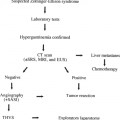
Renal Vein Sampling: Technique and Case Scenarios
Sixty million Americans suffer from hypertension.1 The actual percentage of these patients whose hypertension is of renovascular origin is a difficult statistic to pin down; however, best estimates would be about 1 to 5%.2,3 Keeping in mind that not all patients with renal artery stenosis (RAS) have or develop hypertension, and that not all patients who undergo either surgical or percutaneous intervention for RAS become normotensive, the diagnosis is not always an easy one to make. The term renovascular hypertension, however, should be reserved only for patients who experience a significant improvement or cure of their hypertensive condition after correction of RAS.
Renal artery stenosis has a number of causes and can occur as a result of vessel-wall disease at multiple levels or from extrinsic factors. Atherosclerosis, the classic intraluminal lesion (late phase), is responsible for about two thirds of the cases. Vessel-wall abnormalities, including fibromuscular dysplasia and Takayasu’s arteritis, are the most common intrinsic lesions encountered and constitute the most significant percentage of the remaining cases. Extraluminal lesions such as neurofibromas, adenopathy, and retroperitoneal tumors rarely cause renal artery compression resulting in hypertension. Suspicion for the diagnosis of renovascular hypertension should be aroused in the following clinical situations: (1) onset of hypertension in adolescent or young adult patients; (2) patients who experience a rapid increase in their hypertensive condition despite ongoing medical therapy; (3) patients on multiple antihypertensives who require routine additions to their regimens to maintain control of their blood pressure; and (4) patients with known “predisposing” conditions (e.g., neurofibromatosis, arteritis) who experience new onset or worsening of their hypertensive condition.
 Noninvasive Diagnosis of Renal Artery Stenosis
Noninvasive Diagnosis of Renal Artery Stenosis
Imaging studies designed to diagnose renovascular hypertension were developed as early as the 1960s with the introduction of rapid-sequence excretory urography by Maxwell et al.4 Although it has been used for nearly two decades, the Cooperative Study on Renovascular Hypertension demonstrated a poor correlation between a positive rapid-sequence excretory urogram and patient response following surgical correction of a renal artery lesion. Similar problems have befallen radionuclide renography. The combined test of131I-hippuran and technetium-99 (99mTc)-labeled pentetic acid (DTPA) excretion studies carries a sensitivity and specificity of about 86% and 89%, respectively,5 but cost, variable reproducibility, and diagnosis by an indirect means all detract from its overall value.6 Captopril radionuclide renography uses this potent angiotensin-converting enzyme (ACE) inhibitor to accentuate the effects of RAS, thus improving detection. Captopril inhibits the conversion of angiotensin I (inactive to mildly active) to angiotensin II (extremely potent). In patients with RAS, angiotensin II is used to maintain efferent arteriolar tone so that glomerular filtration pressure is maintained. Captopril, by prohibiting the conversion of angiotensin I to angiotensin II, results in decreased arteriolar tone, leading directly to a marked decrease in the glomerular filtration rate in the stenotic kidney.7 Thus, radionuclide excretion 30 to 60 minutes after the administration of 25 mg of captopril is markedly reduced compared with pre-captopril studies. Captopril studies are particularly useful in improving the sensitivity of studies in patients with RAS in the 65 to 95% range. Accuracy and reliability rates as high as 100% have been reported in the literature.8 Captopril does not improve detection in patients with RAS less than 50 to 65%.
The noninvasive imaging techniques of three-dimensional computed tomography and magnetic resonance angiography also have been studies for the evaluation of RAS. One study that uses spiral computed tomography with three-dimensional rendering techniques demonstrated a sensitivity and specificity of 59 to 92% and 82 to 83%, respectively, in the detection of RAS of 70% or more. The actual sensitivity and specificity were dependent on the specific imaging and reconstruction technique used. Accuracy in grading stenoses ranged from 55 to 80%.9 Magnetic resonance angiography studies using various techniques, including axial and coronal two-dimensional phase-contrast and two-dimensional time-of-flight acquisitions, demonstrated sensitivities and specificities ranging from 53 to 80% and 91 to 97%, respectively. In this study, however, renal artery evaluation was limited to the proximal 35 mm of the main renal artery.10
Doppler evaluation of renal artery blood flow also has been used to detect significant stenoses. Evaluation of parameters such as the Doppler spectrum, pulsatility flow index, end diastolic to peak systolic frequency ratio, renal artery-to-aortic peak systolic velocity ratio, evaluation of the waveform morphology (tardus parvus classification system), acceleration index, and acceleration time have been investigated.11–15 Sensitivities and specificities in detecting RAS have ranged from 79 to 100% and 73 to 97%, respectively.13–14,16–20 Limitations with Doppler techniques include poor detection of (1) accessory renal arteries, (2) low-grade but potentially significant stenoses, and (3) small branch vessel disease. In addition, difficulties with reproducibility, operator-dependent factors, and extrinsic factor (i.e., cardiac rhythm) influence on waveform also detract from this technique.16
 Invasive Diagnosis of Renal Artery Stenosis
Invasive Diagnosis of Renal Artery Stenosis
Renal Angiography
Renal angiography is the gold standard for the evaluation of patients with suspected renovascular hypertension. Although invasive, the test can be performed on an outpatient basis with a procedure time of 30 to 60 minutes. Patients typically can be discharged in 2 to 4 hours after the procedure if 4 to 5F catheters have been used. The major complication rate is about 1%, most of these consisting of significant hematomas. Renal angiography provides highly detailed anatomic images of both major, branch, and accessory renal arteries. A significant complaint with catheter-directed angiography is that this technique alone provides no physiologic information, and, as mentioned earlier, not all renal artery stenoses result in or are responsible for hypertensive disease; however, lesions of questionable significance can be evaluated further by measuring the aortorenal hemodynamic gradient with a 3F catheter or injectable guidewire. Even without the judicious use of hemodynamic gradients to guide intervention, the decision to treat an angiographically detected “significant” RAS in a hypertensive patient results in marked improvement or cure in 80 to 100% of patients.21–25
Renal Vein Renin Sampling
Renin is produced by the juxtaglomerular (JG) cells of the renal arterioles. The release of renin from the JG cells is dependent on intravascular volume, pressure, angiotensin II levels, sodium levels, vascular tone, and changes in plasma potassium and aldosterone levels. In addition, renin secretion can be altered significantly by both patient position and circulating drugs. Renin secretion is stimulated by orthostasis, vasodilators, and ACE inhibitors, but it is inhibited by beta-blockers.24–25 In light of the sensitivity of the JG apparatus to the surrounding environment, collection of blood samples for serum renin values must be obtained while strictly adhering to guidelines.
Technique
Because of the sensitivity of the JG apparatus to circulating antihypertensives, all such drugs should be discontinued 10 days before the study. If this is not possible because of the patient’s hypertensive response to discontinuation of medications, at least the ACE inhibitors and beta-adrenergic blocking drugs should be stopped, as these agents have the most profound effect on renin secretion.24
On the day of the procedure, the patient should be placed in a supine position for at least 2 hours prior to the sampling. The renal veins are catheterized from a transfemoral approach with a 4 or 5F Cobra or shepard’s crook-shaped catheter (with a sidehole). Small injections of contrast are used to confirm the catheter tip’s position. Three aliquots (8 to 10 mL) of blood are obtained from each kidney, clearly labeled, and submitted on ice in a (lavender) top EDTA-containing tube. On the left, sampling should be from beyond the adrenal and gonadal vein orifices. Blood also should be obtained from the infrarenal inferior vena cava or through a peripheral intravenous line concurrent with sampling from the renal veins. The plasma renin activity is determined from all three sites.
Stay updated, free articles. Join our Telegram channel

Full access? Get Clinical Tree



